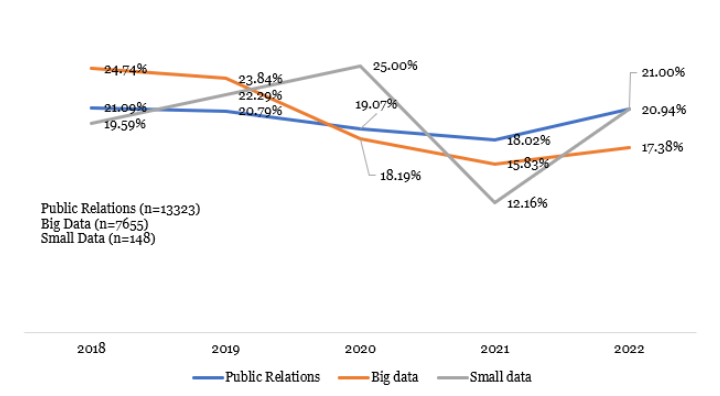
One of the most misunderstood fields in media and communications is Public Relations. It is a field and a profession that few people and organizations are interested in studying and employing for increased revenue and profits. On numerous occasions, it has been linked to marketing and advertising. Having a special department and a professional PR officer or manager is not required for businesses and non-profit organizations as long as an HR or Communication Department exists. Governments prefer media officers or press secretaries to PR managers or Chief Listening Officers.
The ongoing debate over what PR entails remains a significant factor for many people who believe in researching the field and profession via the Internet. Over the years, the functions, importance, and relationship between the field and/or profession and marketing have been mostly sought. As misconceptions persist, emerging technologies are evolving with the distinct feature of disrupting how media and communication activities must be initiated, executed, and monitored.
According to our analyst, this has increased panic search interest in whether Public Relations will be automated like other professions. A number of scholars and professionals from around the world have provided and continue to provide answers. Following a review of the responses, our analyst discovered that technologies are only viewed as supporting tools, which means that they are unlikely to take over PR tasks but will make the job of PR professionals easier before, during, and after crises or in the development of competitive products and/or services.
Register for Tekedia Mini-MBA edition 18 (Sep 15 – Dec 6, 2025) today for early bird discounts. Do annual for access to Blucera.com.
Tekedia AI in Business Masterclass opens registrations.
Join Tekedia Capital Syndicate and co-invest in great global startups.
Register for Tekedia AI Lab: From Technical Design to Deployment.
Emerging Technologies, Big and Small Data
As previously stated, emerging technologies have disrupted the activities of businesses and individuals in recent years. Interpersonal and business-focused technologies are assisting users in generating, aggregating, and using data at the meso, micro, and macro levels. From social networking sites to cloud-based technologies, PR professionals now have access to a wealth of data for developing and implementing various strategies that were not previously available.
In fact, small and big data are driving the world, so it’s important to align with the digital platforms that will make it easy to explore and use them to better serve customers and consumers. Small data are those that PR specialists could easily collect, isolate, and analyze using basic tools or methods. Big data are data that are produced by businesses, consumers, and other organizations through the technologies they employ, both knowingly and unknowingly.
For example, in the last five years, educators and students have become more interested in understanding and learning how big data can be useful materials for practicing Public Relations. People were more interested in understanding big data than small data between 2018 and 2022. According to the interest analysis, one unit of seeking information about PR translates to 30.3% of seeking information about big data. In other words, a unit of desiring information about PRs translated to more than 30 repeated big data interests.
Trend analysis also reveals that the public, referred to as educators and students in this piece because searches within the education category were considered and our analyst believes that the searchers are most likely to be stakeholders in the global education sector, was more interested in Public Relations, big and small data in 2018 than in the previous years (2019-2022). However, interest increased significantly in 2019 before declining in 2020 and 2021 before recovering to levels comparable to those seen in 2018. (see Exhibit 1).
Exhibit 1: Public Relations, big and small data in the public minds between 2018 and 2022

Source: Google Trends, 2023; Infoprations Analysis, 2023
What Public Relations Professionals Need to Know
Our analyst observes that PR practice is expanding daily as new technologies continue to produce big data. Both positive and negative risks to the profession are heightened by this. Several years ago, handling a PR crisis when it materialized was simple. The ability of customers, consumers, and regulatory bodies to use a variety of technologies that can instantly gather information and send it to millions of people makes managing crises challenging, particularly when social networking sites are used to embarrass owners, shareholders, and managers. This is one of the reasons our analyst and a few of his academic colleagues wrote a book to inform PR practitioners and students about the importance of adopting a data-driven digital PR practice. How to use some digital tools before, during, and after crises is explained in the case book.



